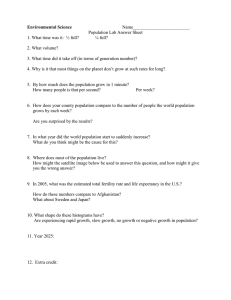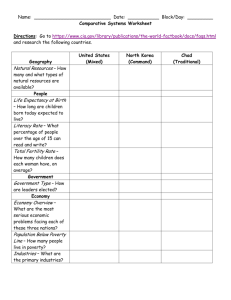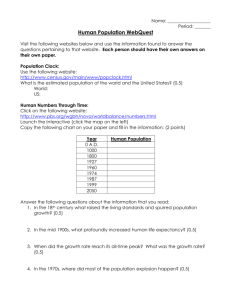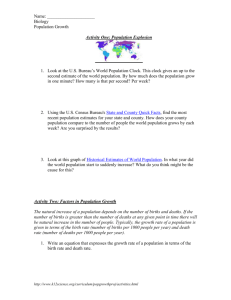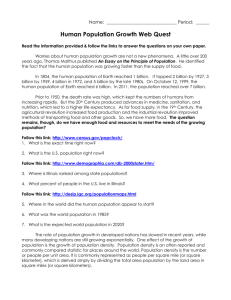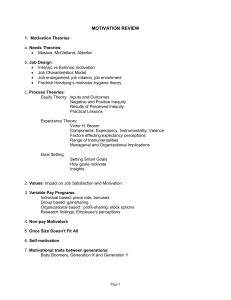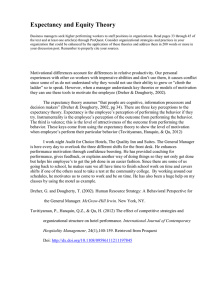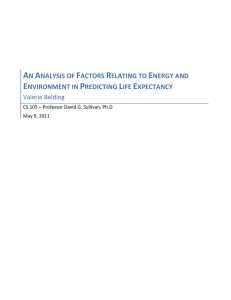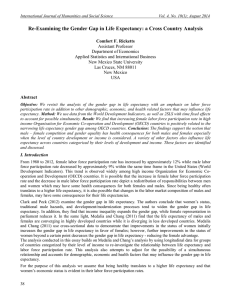Feb. 13th - Population II
advertisement
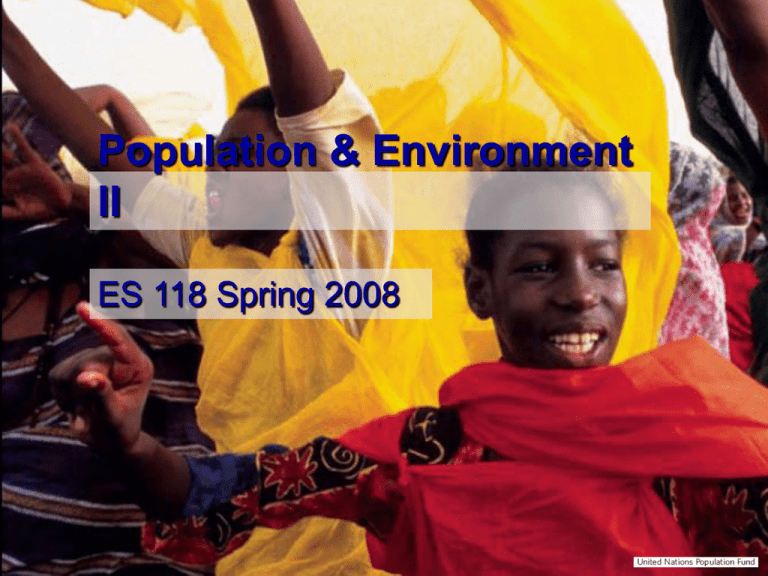
Population & Environment II ES 118 Spring 2008 Life expectancy 20th Century saw global transformation of human health – Worldwide, average life expectancy rose from 40 to 65.5 years (projected to reach 74 by 2050) – In India in 1900, average life expectancy around 23 years; by 2000 this had tripled – In US increased from 47 to 77 years Life expectancy Factors influencing include: – – – – – Better nutrition Improved sanitation Clean water Education Access to health and medical services Strongly correlated with income to about $4,000/person, then level out at about 75 years for men and 85 for women www.gapminder.org Contraceptive revolution For many, the concept of planning the number and timing of their children revolutionary By 2000, more than half of the world’s women of reproductive age using a modern family planning method Early attempts to influence fertility focused on smaller family size and family planning …but access still limited ½ billion people live in countries where <10% of women use an effective contraception – – – – Largely rural and agriculture-based Low per capita income Economic crises Waning international support Examples: Nigeria (8%), Afghanistan, Ethiopia, Mali, Democratic Republic of Congo Social and political factors influencing fertility Some countries used restrictive policies, penalizing families with “too many” children Policy response shifting to broader issues (“social determinants of health”): – Maternal and child health – Recognition of importance of gender and links between poverty, gender roles, inequality, and health – Education, sanitation, transportation, clean water UN Millennium Goals target many of these issues Education Kerala, India – One of poorer states in India, but India's highest life expectancy and lowest infant mortality rates – High literacy rates, especially among women www.gapminder.org Mortality Rapid growth in world’s population in last century caused largely be decline in crude death rates Time Maternal health HIV/AIDS Between 2000-2050, AIDS projected to cause premature deaths of 278 million people in 53 countries—38 in Africa Malaria Why is Malaria getting worse? – Drug resistance – Environmental and social change (poverty, dams, irrigation, deforestation, war, lack of basic sanitation…) – Cost of control Case Studies The case of cities We are now an urban planet – 1900: 10% of global population – 2008: >50% of world’s 6.6b people and growing Growing cities By 2030,~ 5 billion people will live in cities More than 95% of net increase in the global population will be in cities in developing world, mostly in Asia Largest “mega-cities” are growing to unprecedented sizes, but most do not live in mega-cities R. Mace Science 319, 764 -766 (2008) Environmental impact of cities Hot spots of production, consumption, and waste generation <3% of land surface but – – – – 78% of global carbon emissions 60% of residential water use 76% of wood for industrial purposes Huge “ecological footprints” Cities thus present both problems and solutions to sustainability challenges in an increasingly urban world The case of Asia Pace of economic change in India and China is breathtaking – Fastest growing middle-classes in the world These two countries will have a profound impact on the world’s environment China China’s economy has averaged a 9.5% growth rate Approximately 80% of Wal-Mart’s suppliers are now located in China China is starting to build one of the world’s largest automobile industries Steel consumption US and China 19902003 http://www.earth-policy.org/Updates/Update45_data.htm Meat consumption US and China 19602004 http://www.earth-policy.org/Updates/Update45_data.htm The Challenge of Food People in poor countries typically eat at lower trophic levels than rich countries – 90% of energy of plants lost when converted to protein from animals People in countries like US eat too much (“overnutrition”) – 50% of North Americans overweight – 25% obese – Ecological impact of 1 person eating at carnivore level = 10 people living at herbivore level What happens as countries like China become wealthier and want more meat? Environmental impact Extreme pollution – 16 of 20 cities in the world with most polluted air in China Access to resources – China: Just 8% of world’s fresh water for 22% of world’s population – India: 17% of world’s population and 2.3% of land resources The Future Lessons of last ½ Century have shown that countries can undergo rapid and radical social and demographic change – Fertility rates can drop from 7 to 2 children in less than 2 generations – Birth rate remains single most potent determinant of global population growth – We know much more, but prediction difficult How many people? Key questions for future Can the world provide an adequate standard of living for 2.5 billion more people without causing widespread environmental damage? How do we address increased: – – – – Waste Pollution Competition with other organisms for space Energy and climate change What is the earth’s carrying capacity?
